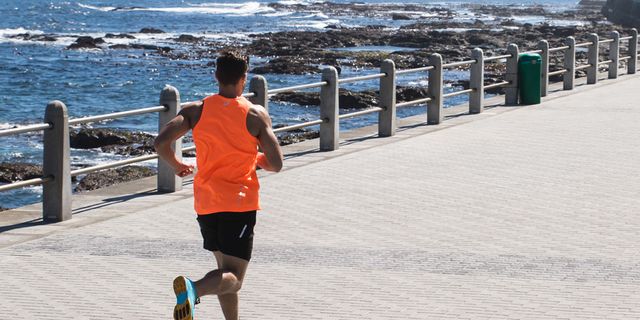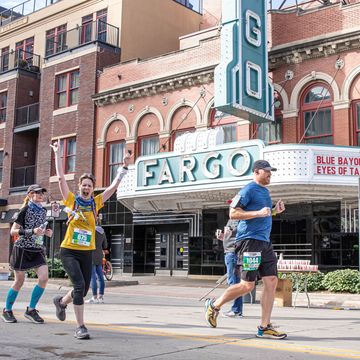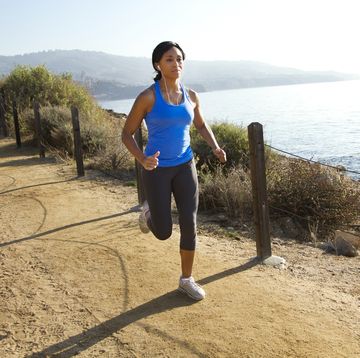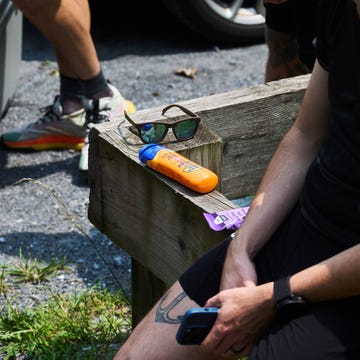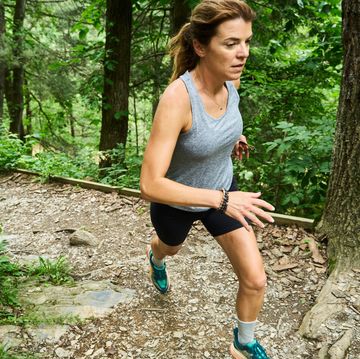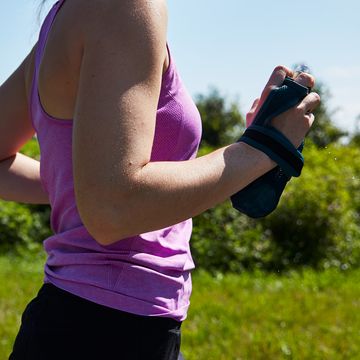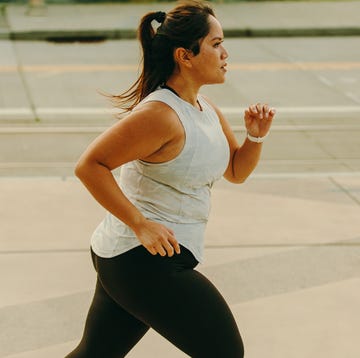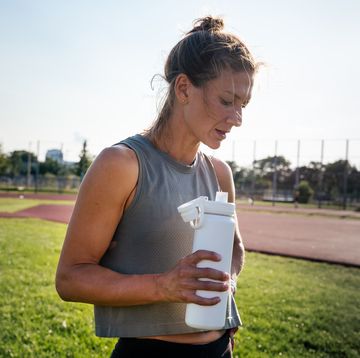Marc asks: I am training for my second marathon, and given the summer weather where I live, I am not able to hit the recommended training paces on most of my runs. It’s just too hot and humid. Would it be better for me to use the treadmill or continue running outdoors and not worry about the paces?
Training in hot, humid weather is difficult, and the best way to handle the heat is to slow down the pace. The good news is that training in these conditions is not without benefit, even when we can’t hit our paces. In some ways, heat training is comparable to altitude training. (Read more about heat acclimation in this Fast Lane column.)
The additional stress that heat places on your body strengthens your cardiovascular system. So even though your run paces may be slower than desired, your heart rate will be higher—and you benefit from training at this higher heart rate intensity. This is also why your perceived exertion level is higher in hot weather, even with slower run paces.
Heat causes your blood flow to be diverted to the skin for cooling purposes; therefore, less oxygen is available to your working muscles, making the training similar to running at altitude. Another benefit of heat training is that your profuse sweating reduces blood volume, which in turn triggers the body to produce more blood. Then, when the temperatures drop in the fall, you’ll have more blood available for working muscles!
Now, that said, there is a downside to consider. Not hitting your run paces means you are unable to simulate race day. Running slower affects your leg turnover rate, which muscle fibers are recruited, and the central nervous system communication between your muscles, nerves, and brain. Ideally, training at specific paces conditions all of these necessary components, preparing you for race day.
In hot, humid conditions, hitting the track for some speedwork may help. You may be able to hit and hold run paces at shorter track distance intervals (like 200 to 400 meter repeats). This faster pace produces the leg turnover rate you desire, recruits specific muscle fibers required for this pace, and helps condition your CNS to adapt to the faster pace.
On the other hand, treadmill running can provide some training perks, too. There are ideal temperatures, you can control overall run pace, and the treadmill belt assists with leg turnover rate. When running on a treadmill, remember to put a 1 to 2 percent incline on it to better simulate outdoor conditions. This incline will help compensate for no wind, no humidity, and the assistance from the treadmill belt.
My suggestion is that you try getting the best of both worlds. Do one or two runs a week on the treadmill and continue running outdoors the other days of the week. Try doing a tempo run and/or a set pace run on the treadmill each week and the remainder of your weekly runs outdoors.
For a tempo run, do six to eight miles at a pace that is slightly faster than your goal race pace; try targeting 30 seconds per mile faster than your goal race pace. For a set pace run, try doing your longer run of the week at your goal race pace.
By continuing to run outdoors, you will keep your road and weather conditioning. By running indoors, you will hit your paces and put your mind at ease. Sounds like a win-win.

Susan Paul has coached more than 2,000 runners and is an exercise physiologist and program director for the Orlando Track Shack Foundation. For more information, visit www.trackshack.com.
